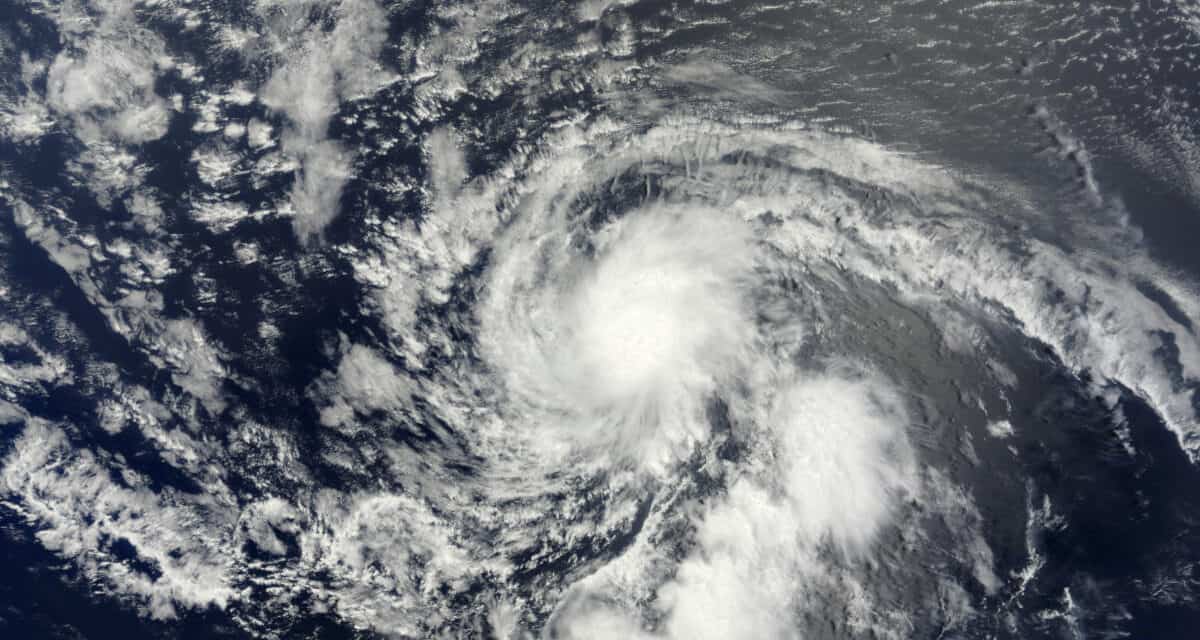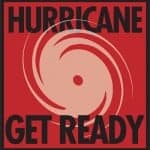Two months into the 2013 Atlantic Hurricane Season, the remnants of Tropical Storm Dorian is about 200 miles north of Puerto Rico and the Virgin Islands, traveling west-northwest at 15 to 20 miles per hour. Dorian quickly formed into a small, but moderately strong, tropical storm off the Cape Verde islands in the Eastern Atlantic last week.
2013 Hurricane Season Two Month Update
As it made its way west by northwest, Dorian encountered cooler water and dryer air. Without warm, moist air to fuel it, Dorian degenerated into a tropical wave and is now an area of disorganized thunderstorms with a small chance of regenerating into a tropical cyclone. Whatever is left of it should reach southern Florida, including the Florida Keys, late Wednesday or early Thursday with thunderstorms and heavy rain.
In the Central Pacific, Tropical Storm Flossie has been on course to impact Hawaii and began affecting the big island and Maui today. It is expected to cross all the islands over the next 48 hours with torrential rains and high winds gusting to 65 MPH. Waves are expected to reach 18 feet at some locations and hazardous conditions across the state will make travel difficult. Also possible are mudslides, tornadoes, and waterspouts.
2013 Atlantic Hurricane Season
In contrast to 2012, which tied for the third most active hurricane season on record, the 2013 Atlantic Hurricane Season has been relatively quiet with just four storms and no hurricanes. 2012 was the most active season before July.
Tropical Storm Andrea came almost as a surprise. It formed in the Caribbean Sea on June 5 and was given little chance of strengthening, but grew very quickly into a tropical storm that hit Florida with peak winds of 65 miles per hour on June 7 before losing strength as it moved across land. As it organized, Andrea dropped 12 inches of rain in Mexico, flooded portions of Cuba where a tornado destroyed three homes. In Florida, it spawned five more tornadoes, caused localized flooding, and downed trees and power lines, causing power outages.
Barry started as a tropical wave in the Caribbean Sea on June 15. As it neared Belize, it was upgraded to a tropical storm on June 19. It hit Veracruz Mexico on June 20 with 48 MPH winds and heavy rain. Lightning killed two people and another person was lost in the flooding.
On July 5, the National Hurricane Center noted another tropical wave 550 miles off the Cape Verde Islands. It intensified to tropical storm strength on July 8 and was named Chantal. It dissipated by July 10, but still caused flooding in Hispaniola and the Dominican Republic.
Being Prepared
Despite a slow start to the 2013 hurricane season, there are still four months left until the season ends on November 30, and there are no guarantees that storms will not form after November.
People living on or near coastlines subject to tropical storms and hurricanes should stay informed of weather conditions that may affect their area. It is better to be prepared and not have to act, than to be unprepared to act when necessary. Know local evacuation routes and have a plan in place that includes where you will evacuate to, if evacuation becomes necessary.
Perform routine maintenance on standby and portable generators. Both portables and standby generators require maintenance at least once or twice a week during continuous use. Stock up on oil and maintenance kits that will keep your generator running through an extended power outage. Keep enough maintenance supplies on hand to last at least two weeks, and a four week supply is even better.
Now is a good time for portable generator owners to begin rotating fuel supplies. Once a week, empty a five gallon container of gasoline into your vehicle’s tank before visiting the pump, and then refill the container on your next visit to the gas station.
Check non-perishable food and bottled water (one gallon per day, per person) supplies. Enough food and water to last a week is the minimum. After Hurricane Sandy, some homes were still without power a month later.
So far, the 2013 hurricane season hasn’t been very active, but that’s no reason to expect it will stay that way. If you’re not prepared, now is the time to get ready.

















